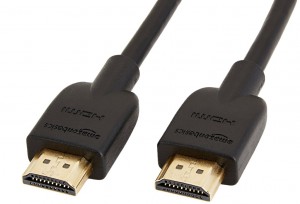
Find yourself scrambling for multiple remote controls every time you want to change your TV source? HDMI Consumer Electronics Control (HDMI-CEC) is a feature of television sets that allows up to 15 devices to communicate with your TV, and with each other, via HDMI. It means, for example, switching to a device like a Roku is as easy as turning it on.
CEC is based on the AV.link protocol (also known by other trade names such as SmartLink and Q-Link), and if you want to get super geeky is enabled through the 13th Pin on a standard HDMI cable (one of three reserved for communications). The feature goes way back to the first HDMI specification (Version 1.0) but really only used in consumer electronics starting with HDMI 1.3a (which also added timer and audio commands).
The problem is TV manufacturers have different ways of identifying HDMI-CEC, and many sets are shipped with the feature disabled. And, while HDMI-CEC wiring is required for new TVs implementation of the feature is optional.
To be sure HDMI-CEC is enabled on your TV go to the settings and look for the brand and associated trade name(s) for CEC listed below.
- AOC: E-link
- Hitachi: HDMI-CEC
- Insignia: (INlink)
- ITT: T-Link
- LG: SimpLink
- Mitsubishi: NetCommand for HDMI
- Onkyo: RIHD (Remote Interactive over HDMI)
- Panasonic: HDAVI Control, EZ-Sync, or VIERA Link
- Philips: EasyLink
- Pioneer: Kuro Link
- Runco International: RuncoLink
- Samsung: Anynet+
- Sharp: Aquos Link
- Sony: BRAVIA Sync and BRAVIA Sync
- Toshiba: CE-Link and Regza Link
- Vizio: CEC
For a list of common HDMI-CEC commands see this page.












